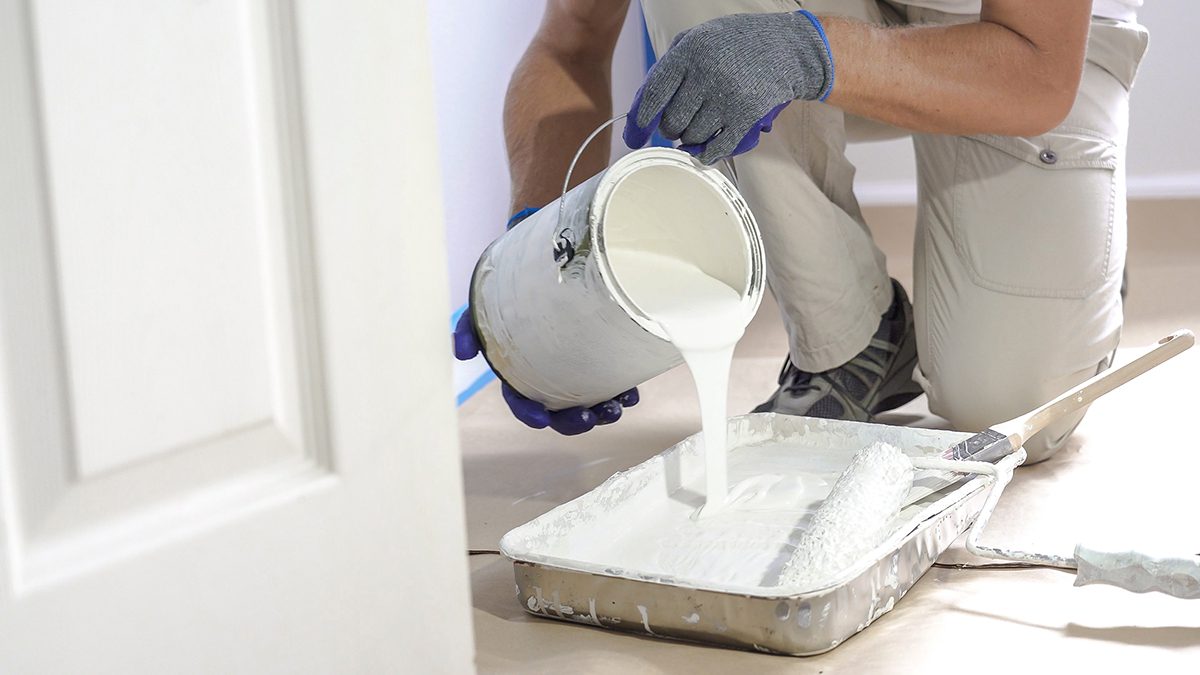
Water-based paints may create less of a stink, but some still contain chemicals flagged as potentially hazardous, according to new research.
Water-based paints have emerged as “greener” and less smelly than solvent-based options. And they are often advertised as containing little-to-no VOCs. But a new study of these paints shows many of them do contain compounds that are considered VOCs, along with other chemicals of emerging concern.
The study was published in the American Chemical Society publication Environmental Science & Technology Letters in April.
Paint consists of four ingredients: pigments, binders, additives and a liquid. If the liquid is water — as in latex and some acrylic paints — it’s classified as a water-based paint, rather than solvent-based. Historically, solvent-based paints were easy to apply and durable, though they released foul-smelling VOCs into the air both during and after application, stinking up a newly painted room. These airborne VOCs can cause respiratory irritation and headaches, among other potential health problems, especially in high concentrations or over long periods of time. Despite water-based paints sporting labels with “zero-” or “low-VOC,” their formulations could contain potentially dangerous chemicals of their own. So, as one of the researchers Ying Xu explained, he and colleagues wanted to understand more about these paints’ formulations. The team noted that there are differing definitions of what constitutes a VOC, some of which are stricter than others, including the World Health Organization’s definition used in this research.
The team collected 40 water-based paints from around the world, all ranked among the top 70 most-sold brands, and many labelled as zero- or low-VOC. Both dry and wet samples were analyzed by gas chromatography-mass spectrometry to determine their composition.
Twenty semi-volatile organic compounds were identified in concentrations ranging from 10 to 35,000 parts per million. While less likely to be in a gaseous form, these can still persist indoors for years, often incorporated into dust.
Endocrine-disrupting phthalates, which act as binders, were largely absent in the tested paints. However, several phthalate-replacement chemicals were detected — their toxicities are still being assessed.
Nearly half the analyzed samples contained measurable amounts of isothiazolinones — preservatives that have been linked to skin irritation and asthmatic symptoms.
In 24 of the wet paint samples advertised as either zero- or low-VOC, 11 different VOCs were detected at concentrations up to 20,000 parts per million.
These concentrations represent the chemical composition within the paint, not the air. Further studies are required to understand how much of these potentially hazardous compounds become airborne as painted surfaces are drying. The researchers say that this work could allow for the design of safer paint products in the future.
- SEO Powered Content & PR Distribution. Get Amplified Today.
- PlatoData.Network Vertical Generative Ai. Empower Yourself. Access Here.
- PlatoAiStream. Web3 Intelligence. Knowledge Amplified. Access Here.
- PlatoESG. Carbon, CleanTech, Energy, Environment, Solar, Waste Management. Access Here.
- PlatoHealth. Biotech and Clinical Trials Intelligence. Access Here.
- Source: https://envirotecmagazine.com/2024/04/18/are-there-vocs-lurking-in-water-based-paints/
